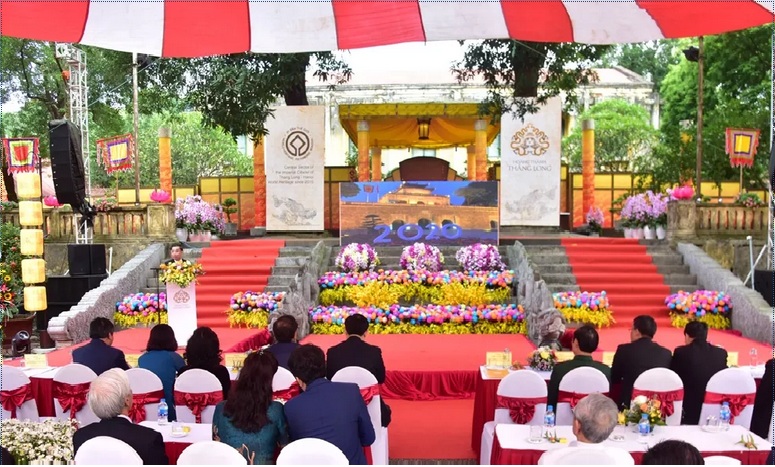The government of Hanoi held a ceremony on November 23 to mark the 10th anniversary of UNESCO’s recognition of the Thang Long imperial citadel as a world cultural heritage site.

The ceremony to mark the 10th anniversary of the Thang Long imperial citadel's status as a world heritage site (Photo: Ha Noi Moi)
The site was officially added to the UNESCO register in 2010, exactly 1,000 years after Emperor Ly Thai To established the Vietnamese capital in Dai La, which he later renamed Thang Long, meaning ascending dragon.
The ceremony began with an incense offering ritual, followed by a performance that re-enacted the moment the first Ly emperor relocated the imperial capital from Hoa Lu to Thang Long.
In his speech, Hanoi Chairman Chu Ngoc Anh highlighted the value of the heritage site, which spanned 13 centuries as a centre of power with a multitude of cultural layers and relics.
He stated that UNESCO’s recognition of the site was first and foremost because of its outstanding value and thereafter the efforts of both Vietnamese and foreign experts and relevant agencies.
According to Anh, the city is working to complete the scheme to re-create the Kinh Thien Palace, an important structure in the imperial citadel, as one of the main focuses of conservation work in the coming years.
Speaking at the anniversary ceremony, UNESCO head in Vietnam Michael Croft said he recognised Hanoi’s efforts to safeguard and promote the value of the citadel in accordance with its commitments.
On the occasion, the Hanoi government presented certificates of merit to three units and four individuals who have strived tirelessly in protecting and promoting the cultural value of Thang Long-Hanoi.